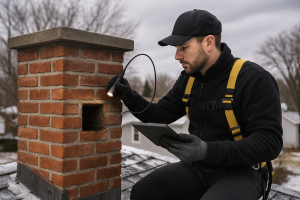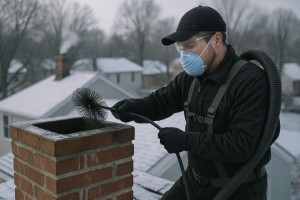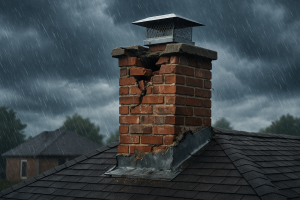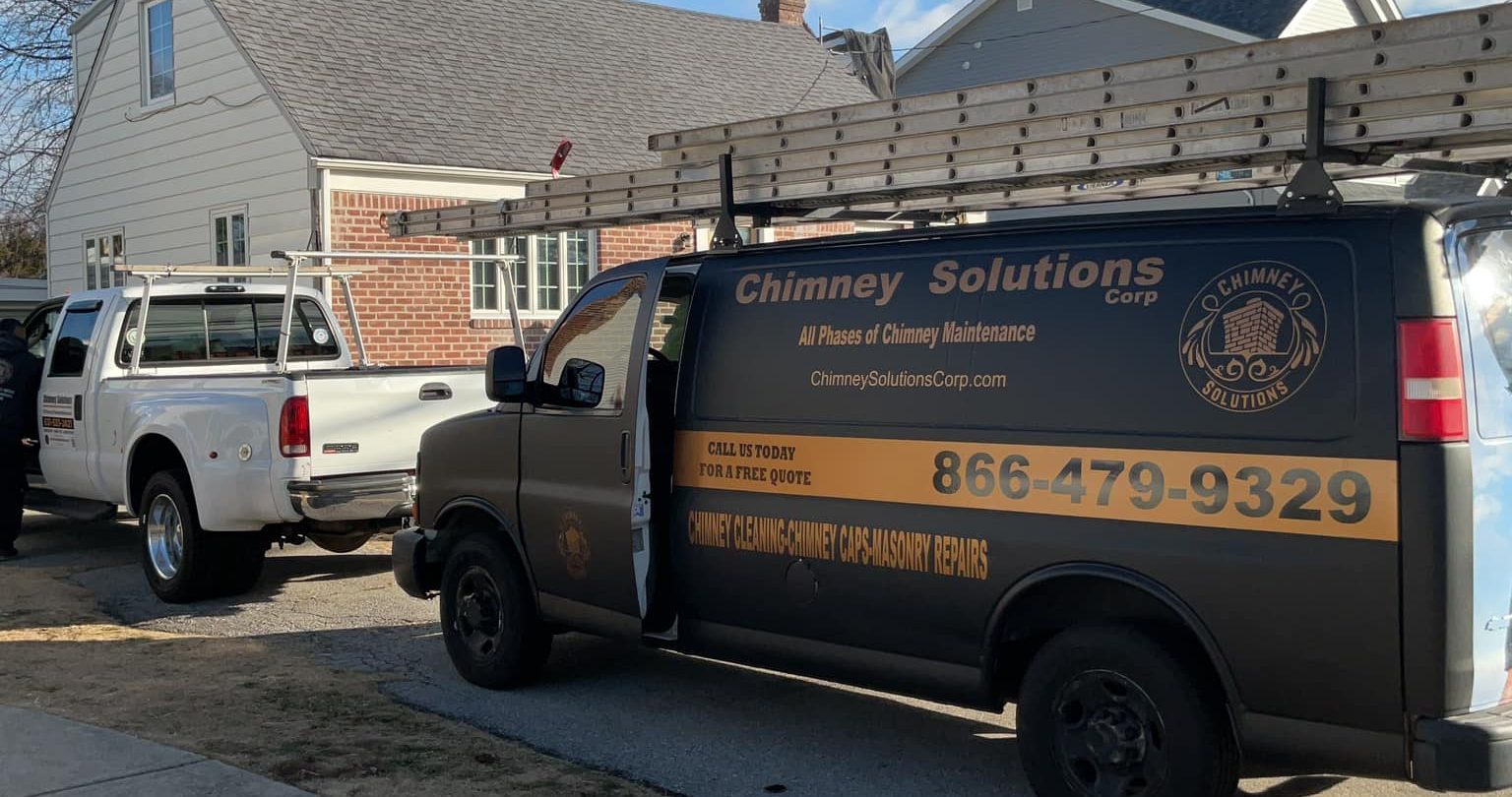How to Spot and Address Chimney Blockages in Commercial Properties
Chimney blockages in commercial properties pose serious safety risks and can severely hinder the efficiency of heating systems. Whether you manage an office building, retail space, or any other type of commercial property, it’s crucial to recognize the signs of chimney blockages early and take timely action to avoid costly repairs and safety hazards. In this comprehensive guide, we will discuss how to spot chimney blockages and provide actionable steps to address potential issues in commercial chimneys.
Why Chimney Blockages Are a Serious Safety Concern in Commercial Properties
Chimney blockages are more than just a minor inconvenience; they are a significant safety concern for commercial properties. Obstructions within the chimney, whether caused by creosote buildup, animal nests, or debris, restrict the proper flow of smoke and harmful gases, which can lead to dangerous conditions. Blockages can cause a decrease in heating efficiency, increase the risk of chimney fires, and even expose your building to carbon monoxide poisoning. By investing in regular maintenance and professional chimney inspections, commercial property owners can ensure the safe operation of their heating systems and avoid dangerous consequences.
Warning Signs Your Commercial Chimney Needs Attention
Identifying the signs of a blocked chimney in commercial properties can sometimes be tricky, especially if the issues are not immediately visible. However, several key warning signs can help property managers spot potential problems. One of the most noticeable signs is smoke backdrafting. If smoke is entering the living spaces instead of rising up the chimney, this is a clear indication of a blockage. Unusual odors near the fireplace, such as musty smells, can also point to the presence of mold or trapped moisture, often caused by a dirty chimney or hidden water leaks.
Additionally, a diminished draft in the chimney is another signal that something may be blocking the flue. A properly functioning chimney should have a strong draft, allowing air and smoke to flow efficiently. If the flow of smoke is weak or inconsistent, a blockage may be obstructing the chimney’s airway.
How to Check if Your Chimney Is Blocked
Performing a visual inspection is the first step in identifying potential chimney blockages. Use a flashlight to look inside the chimney for visible signs of obstructions, such as bird nests, debris, or soot accumulation. However, a basic inspection may not always reveal hidden blockages. For a more thorough assessment, consider performing a smoke test. This involves lighting a small amount of paper in the fireplace and watching for smoke backdraft or poor ventilation. If the smoke fails to rise properly, it may indicate an obstruction inside the chimney flue.
While a visual inspection and smoke test can help identify issues, hiring a professional chimney sweep with specialized tools is essential for a detailed evaluation. A professional chimney inspection is the most effective way to ensure that no hidden issues are overlooked, particularly those related to the chimney structure or masonry.
Common Causes of Chimney Blockages in Commercial Buildings
Several factors can lead to chimney blockages in commercial properties. Creosote buildup, a flammable substance that forms when wood burns, is one of the most common causes. Over time, excessive creosote buildup can create a dangerous blockage in the chimney and increase the risk of chimney fires. Additionally, debris such as leaves, twigs, and even bird nests can obstruct the chimney flue. Birds and animals often seek shelter in chimneys, particularly during colder months, leading to blockages that restrict airflow.
Water damage is another common issue, especially in masonry chimneys. When the chimney crown or mortar joints are damaged, water can infiltrate the structure and cause deterioration. Over time, this can lead to further damage, including rusting of the chimney liner and the development of cracks in the chimney walls.
The Importance of Regular Maintenance and Inspections for Chimneys in Commercial Properties
Regular chimney maintenance is essential for ensuring the safe operation of heating systems in commercial properties. Proactive care helps to prevent common chimney issues, such as creosote buildup and debris accumulation, from escalating into dangerous blockages. Scheduling regular inspections with a professional chimney technician provides peace of mind knowing that your chimney is operating efficiently and safely.
Routine maintenance includes annual chimney cleaning to remove creosote, soot, and debris that could hinder proper airflow. This is essential for preventing chimney fires and maintaining the efficiency of your heating appliances. A well-maintained chimney also contributes to better indoor air quality by ensuring that harmful gases, including carbon monoxide, are safely vented out of the building.
Preventing Chimney Blockages with Proper Maintenance
Prevention is always better than dealing with the aftermath of a chimney blockage. Installing a chimney cap is one of the most effective ways to keep debris and animals from entering the chimney. A chimney cap also helps to prevent water damage by shielding the chimney crown from rain and snow.
Regular cleanings are also essential to remove soot and other buildup that can cause blockages. It’s important to hire certified chimney professionals who use specialized equipment to perform these tasks. A professional cleaning service can ensure that every part of the chimney, including the chimney liner, flue tiles, and mortar joints, is thoroughly cleaned and inspected.
Is Chimney Repair Covered by Insurance for Commercial Properties?
In many cases, chimney repairs may be covered under commercial property insurance, depending on the cause of the damage. For instance, damage caused by a fire or a storm may be reimbursed by your insurance provider. However, issues arising from poor maintenance or wear and tear are typically not covered. It’s important for property managers to carefully review their insurance policy and consult with their insurer to understand the scope of their coverage for chimney repairs.
How Often Should Commercial Chimneys Be Inspected?
Chimney inspections are crucial to maintaining the safety and efficiency of commercial heating systems. For most commercial properties, a professional chimney inspection should be conducted at least once a year. Annual chimney inspections are necessary to identify any hidden issues, such as cracks in the chimney liner or signs of water damage. During the inspection, a professional chimney technician will evaluate the overall condition of the chimney structure, ensuring that it meets safety standards and is free from potential hazards.
What Certifications Should a Chimney Repair Company Have?
When hiring a chimney repair company, it’s essential to ensure that they meet industry standards and have the necessary certifications. A qualified chimney professional should be certified by the Chimney Safety Institute of America (CSIA). This certification ensures that the technician has received proper training and adheres to the highest safety standards. Additionally, the company should be licensed and insured to protect both the property owner and the technicians performing the work.
Conclusion
Regular chimney maintenance and professional inspections are key to preventing costly repairs and ensuring the safe operation of heating systems in commercial properties. By identifying and addressing chimney blockages early on, property managers can avoid the serious risks associated with chimney fires, carbon monoxide buildup, and water damage. If you suspect that your commercial chimney may be blocked or in need of maintenance, don’t hesitate to contact a certified chimney professional for a comprehensive inspection. Taking proactive steps to maintain your chimney not only ensures the safety of your building but also helps to keep your business operations running smoothly and efficiently.



